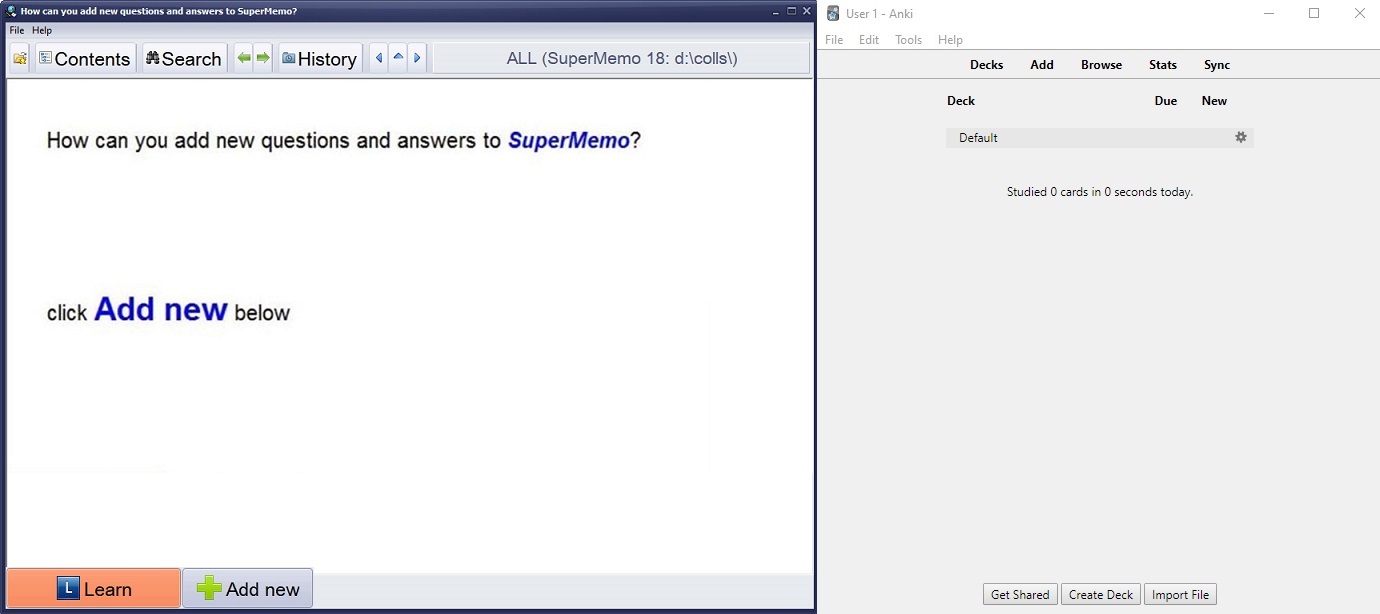Why 99% People Never Learned How To Learn And How to Become That 1% (II)

Image by Wokandapix from Pixabay
1. Real Learning Requires a Paradigm Shift
2. Correct Advice Doesn’t Lead Straight to Implementation
3. Direct Confrontation with the Inherent Difficulty of Real Learning
1. Real Learning Requires a Paradigm Shift
Our comforting conviction that
the worldlearning makes sense rests on a secure foundation: our almost unlimited ability to ignore our ignorance. Thinking, Fast and Slow
Developing general knowledge of the learning process takes a lot of time, effort, trials and errors. You don’t know what you don’t know (there are always things you wished you’d known 10 years ago); you don’t know what’s possible with memory (how world memory champions are made); you don’t know what “real learning” means (“so there’s fake learning now??)
Real learning requires a paradigm shift. Many years ago I didn’t know what I know now. I was still thinking under the traditional paradigm of “learning means listening to someone speak for 2 hours; studying means sitting down with a textbook and a notebook. Then start highlighting and taking notes." So I thought, there must be better ways to do these activities. Should I voice-record/video-tape every lecture? How do I take better notes? So I googled “how to take better notes” but I never questioned whether I should take notes in the first place. Why SuperMemo Trashes Any Note-taking System (Including OneNote and Evernote)
Another example is how to speed read. I was googling how to read better and inevitably I came across speed reading (TL;DR: it doesn’t work). Speed read is reading faster linearly, one book at a time. But I never questioned whether I should linear read, as opposed to what I do now: Incremental Reading.
Both examples illustrate that I couldn’t think outside the box. I was thinking under the traditional paradigm and trying to optimize various learning techniques without questioning whether they work at all. I never questions the validity and efficiency of these activities. It’s just that if step one is wrong, all subsequent steps are wrong. If something doesn’t work, no matter how much you optimize it, it still doesn’t work.
Thinking outside the box requires a paradigm shift and it’s very difficult. Once you’ve had some ideas about what learning looks like, you’re not going to change easily, unless a stroke of insight (for me that was reading Make It Stick: The Science of Successful Learning
2. Correct Advice Doesn’t Lead Straight to Implementation
The problems with good advice (if you’re lucky) is that most are rather vague and theory-based. Even if you bumped into a good source like Make It Stick or A Mind For Numbers, you still lack concrete instructions on how to implement those techniques:
Set aside a little time every week throughout the semester to quiz yourself on the material in a course, both the current week’s work and material covered in prior weeks.
If you use flashcards, don’t stop quizzing yourself on the cards that you answer correctly a couple of times. Continue to shuffle them into the deck until they’re well mastered. Only then set them aside—but in a pile that you revisit periodically, perhaps monthly. Make It Stick
Students should space their retrieval practice across days. A rule of thumb is to divide your total study time into fifths and test yourself at each time point. If you need to retain the information longer (e.g., until a final exam), work to increase the interval between retrieval practice sessions. MARGE: A Whole-Brain Learning Approach for Students and Teachers
They provide a good general rule of thumb about how to study. This is nice and all but how would one actually implement these strategies: “Shuffle how? Well mastered? Increase the interval how long?”
You will realize “Oh spaced repetition, interleaved practice and retrieval practice are really good for learning. But how do I implement them?” It’s at this point you’ve hit a wall. Knowing these principles is one thing, actually using them is another.
For retrieval practice, you may resort to using paper flashcards Leitner system, but this is absolutely not feasible long-term with thousands and thousands of paper flashcards; for spaced repetition you may manually, with a pen and a calculator to calculate the intervals. Oh the busy work…
There’s a lack of translation from research results to actual implementation (Spaced retrieval practice –> SuperMemo/Anki). Their direct application tool is SuperMemo/Anki. In A Mind For Numbers, Anki is mentioned three times (64, 138, 174). In Learn Better, Anki and SuperMemo (surprise, surprise) are mentioned once respectively.
If you’re lucky and managed to pick the right book (A Mind For Numbers) over thousands of others AND didn’t gloss over the most important term (Anki) which appears three times in the entire book AND actually Google it, voilà! You’ve hit the jackpot. If I remember correctly, I was the lucky (and determined) one to discover Anki exactly like this. But what are the odds? If you’re not lucky or determined enough, you will never realize the existence of Spaced Repetition Software (SRS).
3. Direct Confrontation with the Inherent Difficulty of Real Learning
Just when you think the journey is over… it’s just the beginning. You’ve discovered the theories and tools for real learning. And now you have a blank Anki deck page or SuperMemo Welcome screen in front of you:

What do you do? It’s often said that “the learning curve and barrier of entry of SRS is high.” This is also one reason that when I suggest SRS I would start with Anki. Then a friend of mine even found Anki to be difficult to use.
Is it really the problems of Spaced Repetition Software?
In reality, it’s not about the tools, but the direct confrontation with memory limitation, dedication and commitment required from “real learning” that make most people quit:
“I need to make flashcards out of everything I want to remember??”
“I need to open Anki/SuperMemo to do the reps every day??”
“One flashcards for each foreign vocabulary?? But I have thousands of them!”
“What do you mean “seeing this card three years laters”? So I have to do this forever??”
When reality hits:
- Procrastination: the allure of those social media app icons over Ankidroid or Ankimobile
- Repetitions keep accumulating to hundreds or even thousands
- Possibility of failure on every item: you either know the answer or you don’t; there’s no cheating yourself.
At the same time, choosing SRS over re-reading/note-taking/highlighting means no more “mindless studying”: your mind is already elsewhere when you’re studying.
I believe these are the underlying factors for why “the learning curve of SuperMemo or Anki is so steep.” The real learning curve is not about the tools; it’s learning itself: the learning curve of learning. The drawbacks of any spaced repetition software are mostly irrelevant to the tool itself, but the problems with human memory: forgetting is the default. It’s simply that if you don’t retrieve the memory frequently enough, you forget. SRS is the tool and solution to address these problems.
Forgetting is the default, not the exception, so the ultralearners I encountered had devised various strategies for coping with this fact of life. UltraLearning
As I mentioned in If SuperMemo/Anki Really is THE BEST Learning Tool, Why Isn’t Every Student Using It?:
What real learning requires: a long-term commitment far outside the normal imagination of what learning and studying look like.
You may not have the workload of a medical student, but the learning process is the same nonetheless. To me, “ultralearning” is a term that entails striving to make learning “works” while fully knowing and accepting any challenges ahead:
A common theme … [among] ultralearners I have encountered: an obsessive intensity that exceeds what is considered a normal investment of effort.
[Ultralearners'] interests tended toward obsession. They were aggressive about optimizing their strategies, fiercely debating the merits of esoteric concepts such as interleaving practice, leech thresholds, or keyword mnemonics.
All of the ultralearners I met took unusual steps to maximize their effectiveness in learning. Fearlessly attempting to speak a new language you’ve just started to practice, systematically drilling tens of thousands of trivia questions, and iterating through art again and again until it is perfect is hard mental work. It can feel as though your mind is at its limit. The opposite of this is learning optimized for fun or convenience: choosing a language-learning app because it’s entertaining, passively watching trivia show reruns on television so you don’t feel stupid, or dabbling instead of serious practice.
Two fascinating stories on what it takes to reach true language mastery:
Today is my 7 year Anki anniversary; missed one day in 2019 by mistake. He’s the guy from How I Passed the Demanding, 5-Part, 5 1/2 Hour, Oral, Paper and Pen, Highest Level (C2), Italian Language Exam Without Going to Italy – Here’s a Hint: the 326,538 Flashcard Reviews Helped a Lot.
Here are some relevant quotes on How I Did It:
I have studied at 5 o’clock in the morning and 2 o’clock in the morning and all times in between.
Where Did Those Flashcards Come From? I created every single one myself. I calculated I created an average of 50 flashcards an hour when I got on a roll. That means to create 18,000 cards probably took 360 hours over two years. That works out to about four hours every week.
I am giving myself five years to pass the highest level Japanese test. (Update 2019: I am going to have to double that estimate to ten years. Japanese is proving much harder than I hoped.)
My streak is currently at 1,730 days in a row, heading towards 5 years straight. I have done over 613,000 reviews (over a million including my other decks and Japanese) in 1,088 hours. My average interval is 2.6 years, so it takes a long time for a card to reappear. The longest interval is 14.3 years.
Sometimes I would sit on a stool in the bathroom or stand in front of the fridge with my tablet on top until 1 o’clock in the morning to finish up my daily load of studying.
As of this writing, I’m up to 24,859 cards and closing in on 718,000 reviews. For all decks, I passed 1.5 million reviews a while back.
Both stories are very fascinating and they shed light on what it takes to reach true mastery for a foreign language. Even if you don’t agree with their methods I’m sure you’ll appreciate their dedication and commitment. Be sure to watch the video and article above.
So how do you become that 1%?
1. How to Learn About Meta-Learning: My Resource List
2. A 4-Step Roadmap Towards the Mastery of How to Learn (6 Years of Experience Summarized
TL;DR: Just use SuperMemo/Anki
Closing Remarks
(Part I and part II including If SuperMemo/Anki Really is THE BEST Learning Tool, Why Isn’t Every Student Using It?
1. Learning cognitive biases: stability bias, retrieval fluency, illusion of knowing
2. Misconception about memory: Human memory is NOT like computer memory
3. Un-conditioning: Education (Schooling) ≠ Learning
4. You don’t actually need real learning in school
5. We did not learn how to learn in school, so we simply don’t know how
6. Difficult to uproot established but wrong learning ideas
7. Old learning habits die hard
8. Old learning mentalities die hard
9. Real learning requires a paradigm shift
10. Correct advice doesn’t lead straight to implementation
11. Direct confrontation with the inherent difficulty of real learning